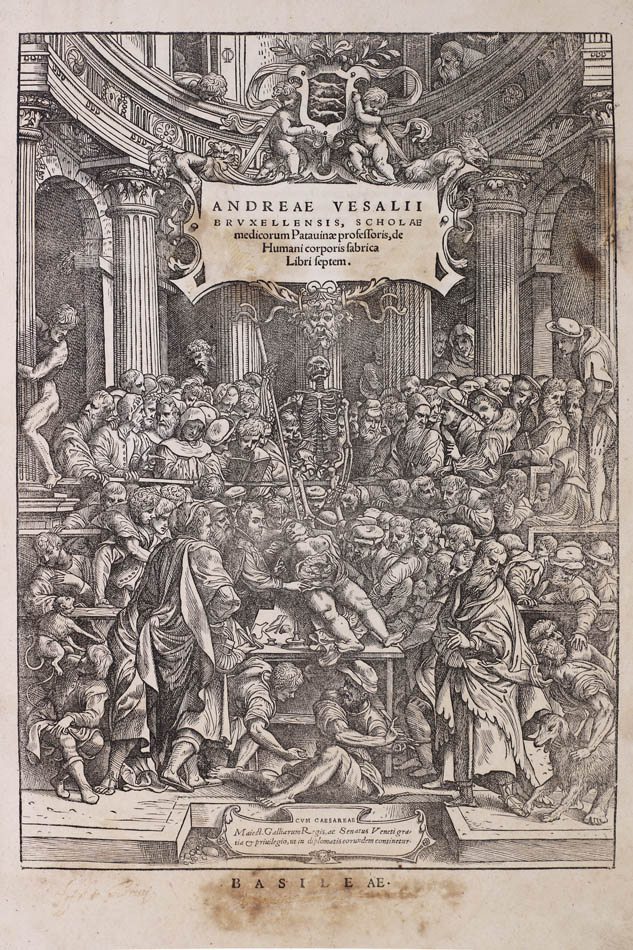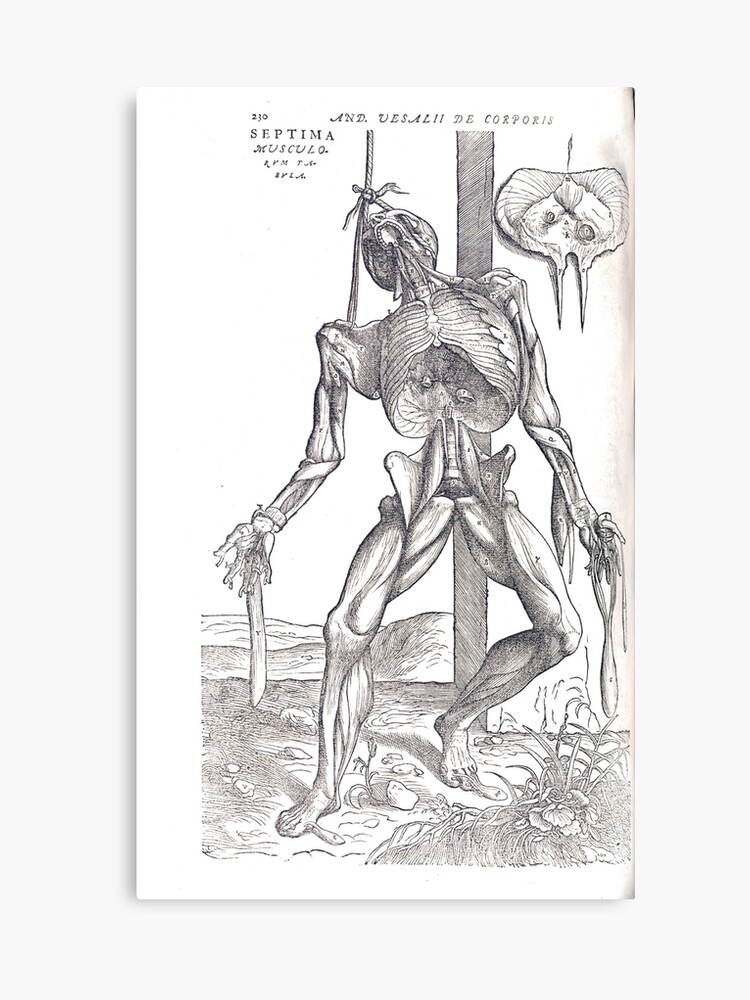The illustrations were engraved on wooden blocks, which allowed for very fine detail. The more than illustrations are of great artistic merit and are generally attributed by modern scholars to the "studio of Titian " rather than Johannes Stephanus of Calcar , who provided drawings for Vesalius' earlier tracts. Book piracy was common at this time. Which work is newly reuyued, corrected, and published by the chirurgions of the same hospital now beeing , London. Not only did it overturn 14 centuries of accepted Galenic tradition, but it was perhaps the first mechanically printed book to completely integrate every aspect of book design: The result, published in Aug , was actually three books: 
| Uploader: | Grosho |
| Date Added: | 18 November 2005 |
| File Size: | 14.37 Mb |
| Operating Systems: | Windows NT/2000/XP/2003/2003/7/8/10 MacOS 10/X |
| Downloads: | 78693 |
| Price: | Free* [*Free Regsitration Required] |
De Humani Corporis Fabrica Libri Septem
This page was last edited on 18 Corporjsat Each illustration displays a deepening view of the human body which can be followed while dissecting a human body.
Vesalius used such authorities to place himself in an established tradition, even as he questioned aspects of accepted Galenic thought. Below right is a pickpocket caught in the act.
Vesalius also mentions the corprois needed to perform a dissection. Galen, the prominent Greek physiciansurgeon and philosopher in the Roman empire had written on anatomy among other topics, but his work remained largely unchecked until the time of Vesalius.
The woodblocks floated around Europe for the next years and most of them ended up in the Bayerische Staatsbibliothek, where they were last used to print Andreae Vesalii Bruzellensis icones anatomicae, ediderunt Academia Medicinae Nova-Eboracensis et Bibliotheca Universitatis Monacensis.
By performing human dissections, humanj uncovered errors in the work of the ancient anatomist Galen, whose use of animals as dissection material to substitute for the lack of human cadavers had dominated the understanding of the body for centuries. The Fabrica contained folio pages of Latin text and beautiful woodcut illustrations depicting the anatomical body in different poses. Anatomici summi septemdecim tabulae.
These books describe the structure corporiz functions of the heart and the organs of respiration, the brain and its coverings, the eye, the organs of sensation, and the nerves of the limbs. They are surrounded by a multitude of spectators crowded into a three-tiered wooden scaffold built into a semicircular amphitheater of Corinthian columns. De humani corporis fabrica Title page.
De Humani Corporis Fabrica Libri Septem · OnView: Digital Collections & Exhibits
The image presented here comes from Glasgow, obviously. Andreas Vesalius of Brussels, ljbri Above is the family coat-of-arms of Andreas Vesalius flanked by two puttithe chubby male children who were often a feature of Renaissance art, and two gargoyles. His Antropologiumpublished in Leipzig inis a philosophical and religious work on the human body containing 17 anatomical woodcut illustrations.
Daniel Garrison will discuss translating the Fabrica for the new English-language edition, Arlene Shaner will explore the forporis of the Icones Anatomicaeand Drs. Licenses allowed particular printers to print works first, but the Venetian and imperial privileges obtained by the authors to try and protect their books from piracy did little to stop others from copying them. Here Vesalius describes the structure of fabrifa muscles, the agents used in creating movement by the body, and the material used to hold the joints together.
De Humani Corporis Fabrica Libri Septem. (On the Fabric of the Human Body in Seven Books).
Retrieved 1 August It presents Vesalius' observations on human bones and cartilage, which he collected from cemeteries. There are ccorporis Franciscan Monks among the spectators, neither exhibiting much interest in the dissection.
It is, by way of an anonymous donor, now in the New York Public Library. Widely read and translated, the Rosegarten was written for midwives and contains the earliest obstetrical woodcuts.

There is much more to learn about the frontispiece of the first edition of the Fabricaand even more when compared to the second edition. Exactly who did the unsigned woodblock illustrations cut parallel to the grain in pear wood in unclear. That year, he published his most famous work, De humani corporis fabricatranslated as On the Fabric of the Human Body.

We are in the enviable position of owning multiple copies of the Fabrica as well as its companion piece the Epitomea briefer volume designed for students with enlarged illustrations to aid the identification of individual features. This demonstrates the culture of active reading in the early modern period. New York and Munich: He then goes on to describe the liver, gall bladder, and the spleen.

Not only did it overturn 14 centuries of accepted Galenic tradition, but it was perhaps the first mechanically printed book to completely integrate every aspect of book design: Through his observations of butchers cutting meat, he was able to incorporate the skills they used in the dissection of the human body.
Although Vesalius was unfamiliar with the anatomy of pregnancy, he provides illustrations of the placenta and the fetal membrane, making anatomical reference to Galen by comparing a dog's reproductive organs to those of a human.

Комментариев нет:
Отправить комментарий